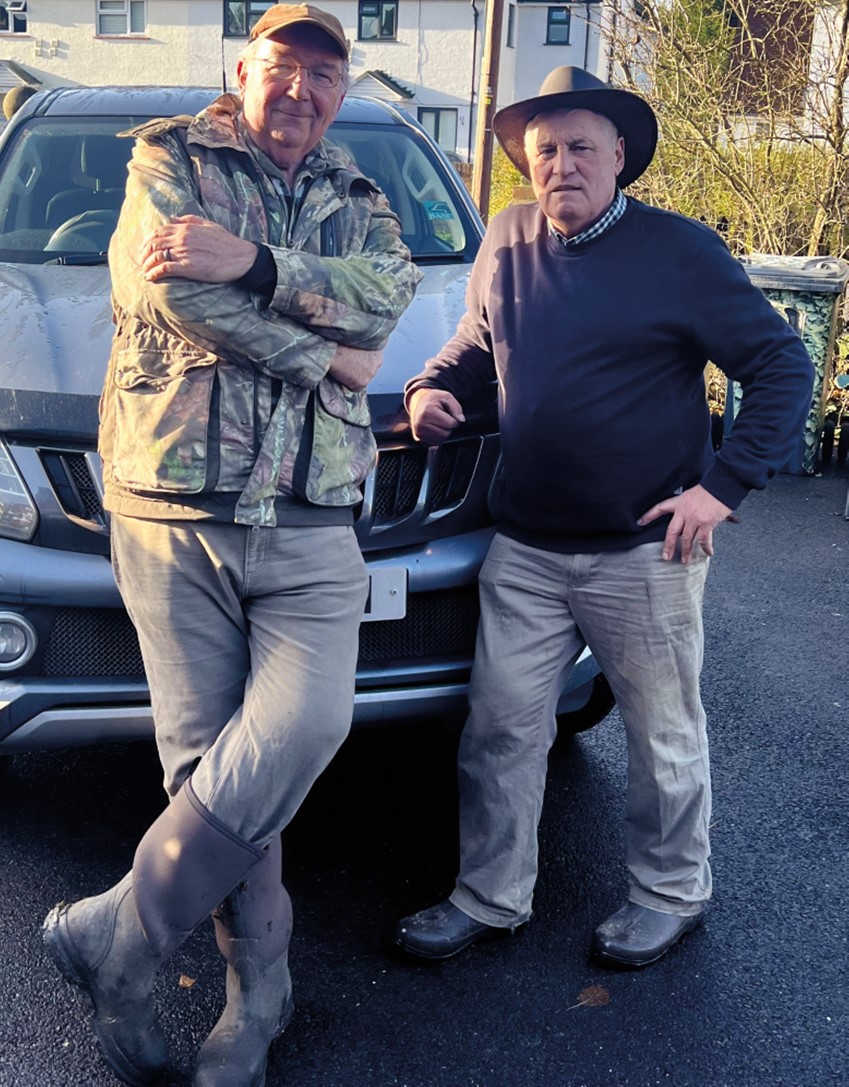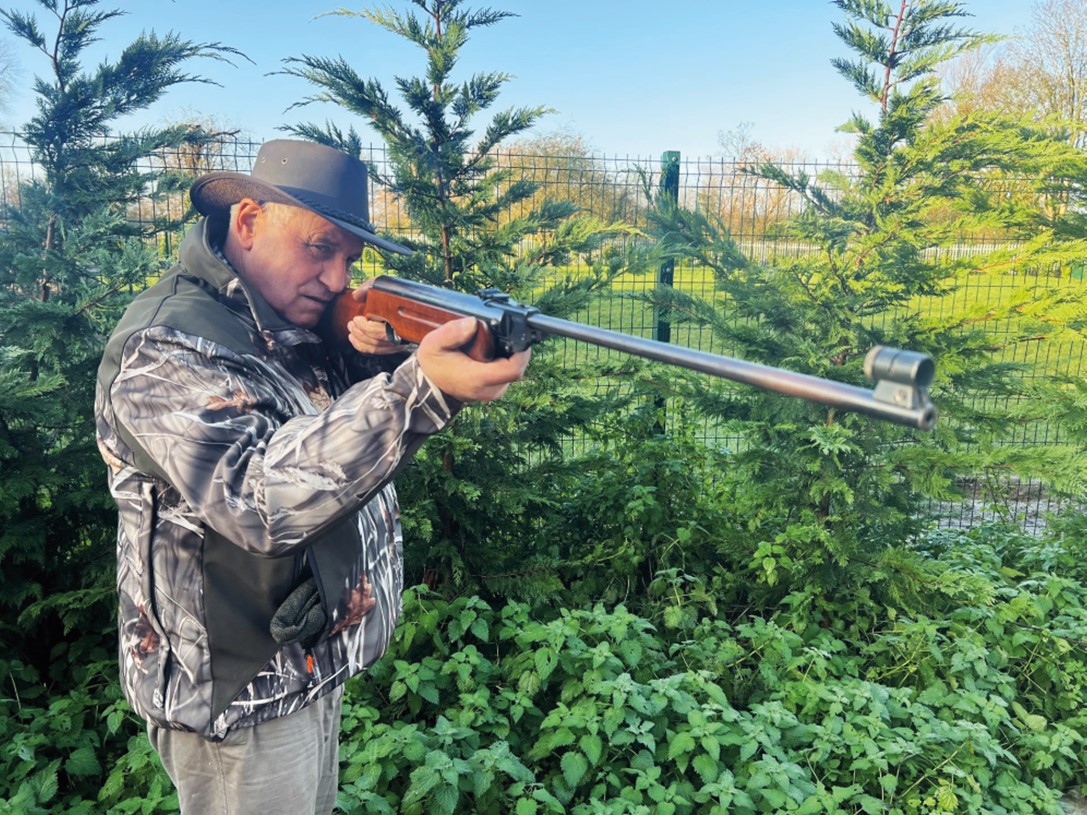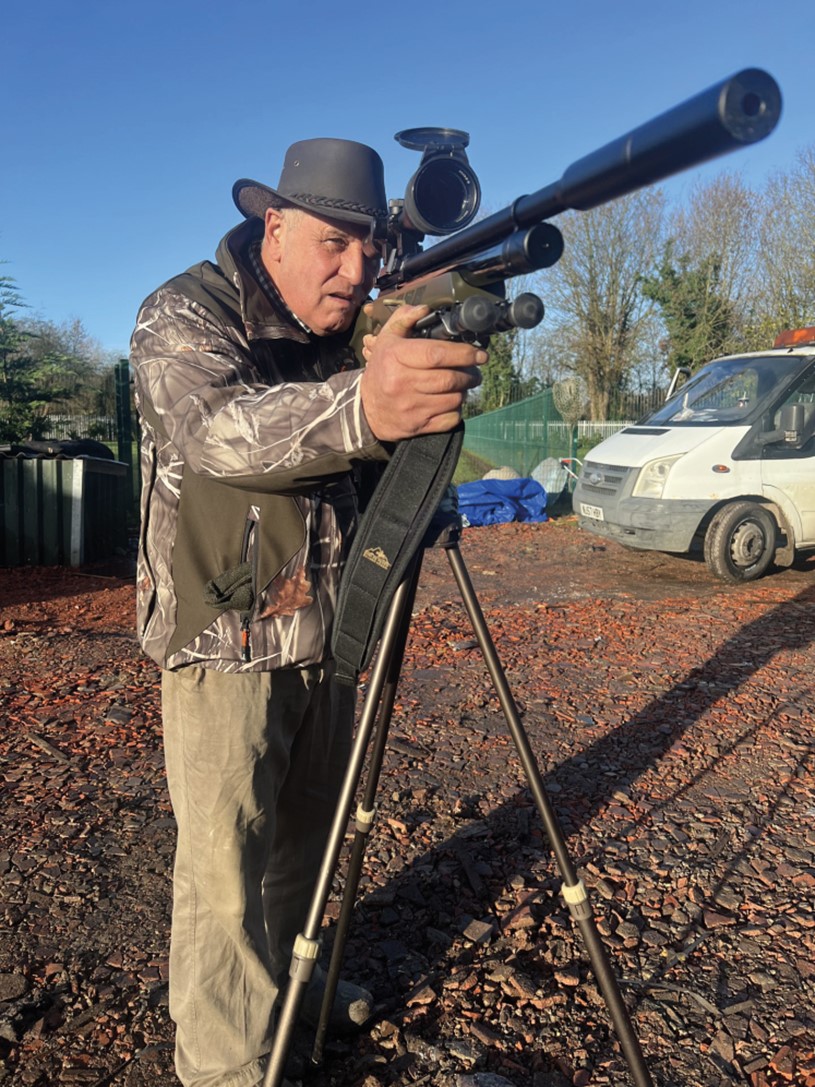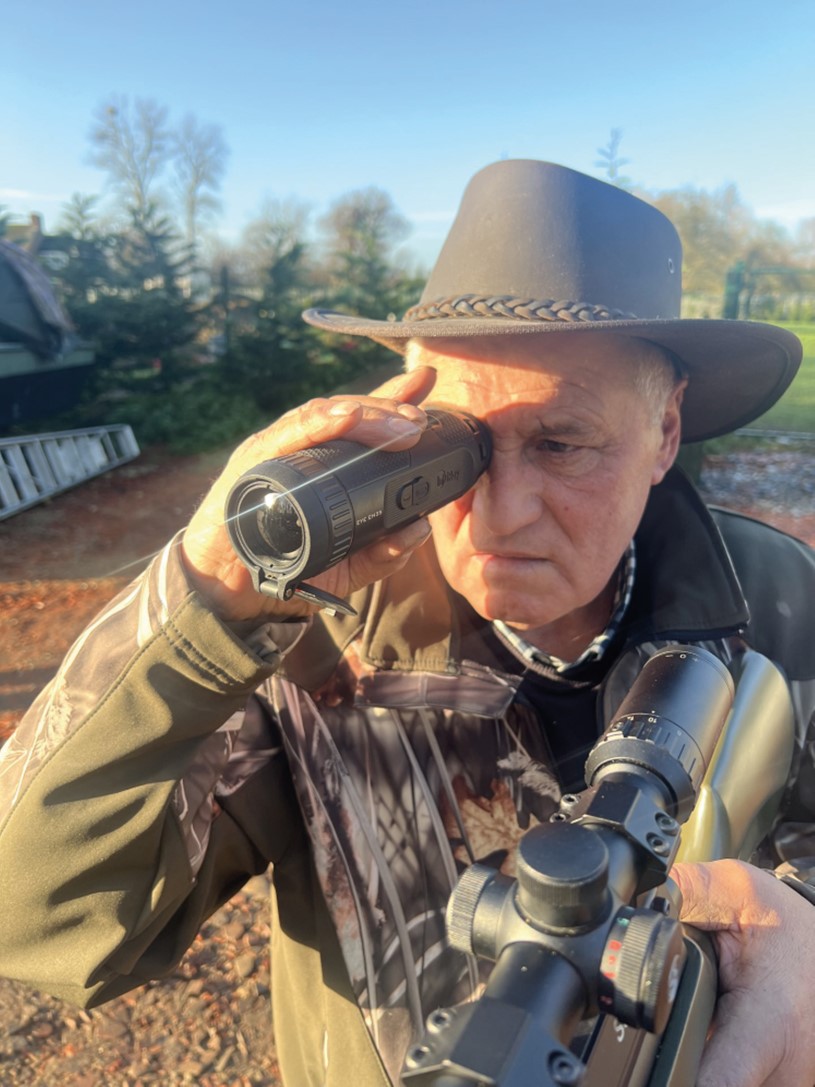Long-term readers of this splendid magazine will recall George Stevens, who used to have a monthly feature, mainly based on his practical, no-nonsense approach to our sport, and specifically hunting. George and I grew up together, brothers from different mothers, and our early lives were governed by our shared passion for all sorts of hunting methods.
We spent pretty much every waking hour, and quite a few when we should have been asleep, out in the fields and woodlands of our native Berkshire, behind rifles, lamps, lurchers, ferrets, and anything else we deemed necessary to aid our hunting obsession.
We had very little money in those early days, so we either made our own stuff, or made do without it. At the risk of appearing boastful, George and I were extremely successful in our pursuits, and I believe this was because we made up for any equipment shortfalls with fieldcraft, combined with fanatical dedication.
THE MARCH OF TECHNOLGY
We still meet up a couple of times a week, usually for a shooting session in George’s back garden, and last time out the main topic of conversation was ‘could we still do it without the technology we use today?’ Like me, George is a comparatively recent convert to hi-tech hardware, and now we both regard thermal spotters and nightvision scopes as all but indispensable. There’s no doubt about it, those advances in technology, and others, have made a massive difference to our hunting, but has our world changed so much that we’d be ineffective without them? To pursue the answer to what is actually an extremely complex question, George and I did what we always used to do, and set off to our old hunting grounds to consider the matter.
THE MARCH OF TIME
The first thing that became obvious, was that we’re not as young as we were, back when fences, gates, ditches and currently insurmountable barriers, would have delayed us for mere seconds. George and I are now well into our 60s, and we’re a whole lot more reluctant to risk damaging ourselves. At this time of our lives, ‘having a fall’ could be a serious event, which always carries the hellish inconvenience of waiting for hours in a hospital A and E department to see if we need mending. Where once we threw ourselves over life’s obstacles, fearless of the consequences, we now study a benign foot stile as though it plans to murder us.
The result of our, entirely necessary, caution, is that we definitely wouldn’t put ourselves everywhere our quarry might happen to be, plus the six-hour footslogs with lamps and ferrets are definitely a thing of the past. These facts of our senior lives have affected our hunting productivity, and there’s no point in deluding ourselves.
 We’ve been mates and hunting buddies since we were at primary school, and that’s how it will always be.
We’ve been mates and hunting buddies since we were at primary school, and that’s how it will always be.
Other aspects of our lives have changed drastically, mostly for the better.
OLDER BUT WISER
Time’s winged chariot has done a drive-by on us, of that there’s no doubt, but there are compensatory factors at play, here. George and I have learned an absolute ton of practical, verified, useable facts over the years, and we’re the living example of the saying, ‘there’s no point getting older, if you don’t get wiser, too.’
An example of that is the way we now maximise our precious time in the field. Where once we’d walk for miles, visiting various areas in the hope of bumping into some sport, these days we do our homework and target the places and times to hunt in a far more informed way. Again, the technology we use, especially thermal spotters, definitely helps us define those times and locations, and to make the most of them when we’re there, but it’s the knowledge that this approach is way better than just turning up and seeing what’s about, that makes the real difference.
KNOWING OUR LIMITATIONS
Part of our knowledge covers our own abilities to hit what we aim at, and more specifically, to know when a shot simply isn’t on. We also have a forensic knowledge of our pellets’ trajectory, our scope reticles’ aim points, and decades more experience in applying the correct windage.
Aided by the super-accurate hardware we have today, such as recoilless rifles, super-clear, totally reliable scopes and their unshakeable mounts, plus pellets that will group so tightly that there’s no space between the holes made by ten of them on a 40-yard target, George and I are better placed than ever to deliver the perfect shot. We both use shooting sticks, too, and supported shots are absolutely the norm.
Going back to the times when we used spring-piston rifles, often with open sights – yes, even when lamping – and shot the vast majority of our quarry from the standing position, there’s no way we could have been as good then as we are now. We didn’t train, as such, either, because we spent every moment we could in the field, so although we’re nowhere near as fit, madly obsessed, or resilient as we used to be, we are, without question, far better practitioners of the hunting arts.
AND ANOTHER THING ….
There’s one more part of modern hunting technology that I haven’t included in this assessment, and it’s a massive one. I’m talking about clothing and footwear, and the double-benefits of the modern stuff must never be underestimated. The jackets, trousers, shirts, fleeces, thermal underwear, gloves, headwear, and footwear, will keep us warm, dry and entirely comfortable under the most ridiculous conditions. The more comfortable we are, the longer we’ll stay out there, and the more often we’re inclined to go, and then there’s the camouflage aspect of it, that adds that extra layer of effectiveness where it counts most.
What we can wear in the hunting field now can’t even be compared to the ex-Army gear we made do with all those years ago, and doing without the modern clothing would be as significant a negative game-changer, as thermal hardware is a positive one. George and I have never been fair weather hunters, but without our favourite clobber, that could well change.
 We can still shoot an open-sighted springer, but for general work, we know our best shot is a scoped PCP.
We can still shoot an open-sighted springer, but for general work, we know our best shot is a scoped PCP.
DECISION TIME
This brings us right back to the opening question, then. Could the present versions of Terry Doe and George Stevens still be efficient hunters without the technology we now use? I said it was a complex question, and it is, but I’m a simple chap, so I’ll answer it in the most uncomplicated way I can.
First, if George and I dispensed with our techno-gadgets, our current hunting efficiency would definitely take a significant dive. Let’s be realistic, here; the hardware we have available to us today has enabled us to a degree that we couldn’t imagine even 10 years ago, let alone 40. The hunting technology revolution is just that – revolutionary.
NOT JUST HUNTING
It’s the same throughout the rest of our lives, though. Only this morning, I asked my car to take me to the nearest hardware store, and it gave me a whole list of them. I chose the one I wanted to visit, the car switched on its sat-nav, and within minutes I was at the store. When I returned to my blessed man cave to write this feature, I politely commanded my Google speaker-thingy to tell me the news, then the weather, and then to play my music of choice. This stuff is normal to most of us, now, and whilst I could certainly manage without it, I know that my life would be the poorer.
Just to underline this point, George and I grew up without many of the commodities most people, quite rightly, have taken for granted all their lives. Things like interior plumbing, running water, flush toilets, mains electricity and gas, didn’t form part of our formative years, but we both had the best childhood imaginable. In short, we really do know what it’s like to do without stuff.
 We not yet relying on walking sticks, but shooting sticks are a constant aid to accuracy.
We not yet relying on walking sticks, but shooting sticks are a constant aid to accuracy.
MEANWHILE, BACK IN THE REAL WORLD
Now we reach the real deal. As with the rest of our lives, George and I could still enjoy our hunting, unaided by the techno-hardware that serves us so well right now. Yes, we could shoot rabbits and rats, at night and during the daylight hours, albeit with the use of a far superior lamping set-up than the mega-heavy, corrosively leaky, lead-acid battery-powered systems we cobbled together back in the day, and both of us can still shoot a springer to a suitable standard. We could still build hides and bait grey squirrels within range of our terminal intentions, or snipe pigeons and crows from their perches in sitty trees, although a good scope would be now compulsory, of course.
We could build many an enjoyable, productive hunting session around what we now regard as ‘the basics’, and we really would be able to dial back the years and put quite a variety of quarry in the bag, but here’s comes the decider. We would know that we weren’t being as clinically effective as we could be, and that’s just not acceptable to us.
 Thermal spotters have turned out to be one of the biggest advantages we’ve ever found – and we’ll be sticking with ‘em!
Thermal spotters have turned out to be one of the biggest advantages we’ve ever found – and we’ll be sticking with ‘em!
SIMPLY THE BEST
Throughout our lives, one of the few constants that fuelled our hunting ambitions, was the desire to be the best we could be, and we dedicated uncountable hours to get to that stage. To deliberately walk that back, and turn away from what we know we can achieve, would stop us in our tracks.
In short, we could do it, because we have done it – but we wouldn’t even want to try. For similar reasons, we wouldn’t be too keen on going back to a life without indoor loos, fridge-freezers, and central heating, either.
As George and I embrace our reclining years, we know, and happily accept, that we will forever remain children of technology.